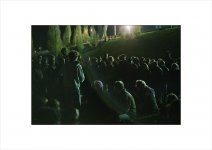Flyfisher Tom
Well-known
I admit, I am rather backwards with technology.
For instance, scanning. I have a Minolta 5400 Dimage.
Here are my questions in no particular order of confusion:
1) what resolution Input DPI and Output DPI should I use? what does this depend on?
2) Is there an optimal number for both, or either?
3) What effect does varying one or the other have?
4) should my size output dimensions simply match what I anticipate printing (at its largest)?
5) I sometimes see 300 dpi tauted as the dpi used by magazines, yet on digital files shot on a digital camera, the dpi is merely 96 (these are shots in RAW). What am I missing? If 300 dpi is required by magazines, why are digital cameras geared to shoot 96 dpi? How should the 300 dpi and 96 dpi figures be reconciled?
I'm sure I have other elementary questions, but I'll save them after a few responses.
Many thanks
For instance, scanning. I have a Minolta 5400 Dimage.
Here are my questions in no particular order of confusion:
1) what resolution Input DPI and Output DPI should I use? what does this depend on?
2) Is there an optimal number for both, or either?
3) What effect does varying one or the other have?
4) should my size output dimensions simply match what I anticipate printing (at its largest)?
5) I sometimes see 300 dpi tauted as the dpi used by magazines, yet on digital files shot on a digital camera, the dpi is merely 96 (these are shots in RAW). What am I missing? If 300 dpi is required by magazines, why are digital cameras geared to shoot 96 dpi? How should the 300 dpi and 96 dpi figures be reconciled?
I'm sure I have other elementary questions, but I'll save them after a few responses.
Many thanks


